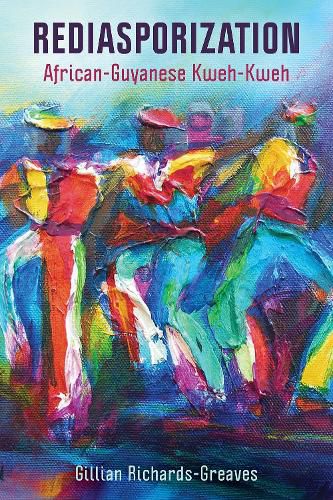Readings Newsletter
Become a Readings Member to make your shopping experience even easier.
Sign in or sign up for free!
You’re not far away from qualifying for FREE standard shipping within Australia
You’ve qualified for FREE standard shipping within Australia
The cart is loading…






This title is printed to order. This book may have been self-published. If so, we cannot guarantee the quality of the content. In the main most books will have gone through the editing process however some may not. We therefore suggest that you be aware of this before ordering this book. If in doubt check either the author or publisher’s details as we are unable to accept any returns unless they are faulty. Please contact us if you have any questions.
Every year on the Friday before Labor Day, Guyanese from all over the world convene in Brooklyn, New York, to celebrate the accidental tradition of Come to My Kwe-Kwe and to connect or reconnect with other Guyanese. Since the fall of 2005, they have celebrated Come to My Kwe-Kwe (more recently, Kwe-Kwe Night), a reenactment of a uniquely African Guyanese prewedding ritual called kweh-kweh, also known as karkalay, mayan, kweh-keh, or pele. Come to My Kwe-Kwe has increasingly become a symbol of African Guyaneseness.
In this volume, Rediasporization: African Guyanese Kwe-Kwe, Gillian Richards-Greaves examines the role of Come to My Kwe-Kwe in the construction of a secondary African Guyanese diaspora (a rediasporization) in New York City. She explores how African Guyanese in the United States draw on the ritual to articulate their tripartite cultural identities: African, Guyanese, and American. This work also investigates the factors that affect African Guyanese perceptions of their racial and gendered selves, and how these perceptions, in turn, impact their engagement with African-influenced cultural performances like Come to My Kwe-Kwe. This work demonstrates how the malleability of this celebration allows African Guyanese to negotiate, highlight, conceal, and even sometimes reject complex, shifting, overlapping, and contextual identities. Ultimately, this work explores how these performances in the United States facilitate African Guyanese transformation from an imagined community to a tangible community.
$9.00 standard shipping within Australia
FREE standard shipping within Australia for orders over $100.00
Express & International shipping calculated at checkout
This title is printed to order. This book may have been self-published. If so, we cannot guarantee the quality of the content. In the main most books will have gone through the editing process however some may not. We therefore suggest that you be aware of this before ordering this book. If in doubt check either the author or publisher’s details as we are unable to accept any returns unless they are faulty. Please contact us if you have any questions.
Every year on the Friday before Labor Day, Guyanese from all over the world convene in Brooklyn, New York, to celebrate the accidental tradition of Come to My Kwe-Kwe and to connect or reconnect with other Guyanese. Since the fall of 2005, they have celebrated Come to My Kwe-Kwe (more recently, Kwe-Kwe Night), a reenactment of a uniquely African Guyanese prewedding ritual called kweh-kweh, also known as karkalay, mayan, kweh-keh, or pele. Come to My Kwe-Kwe has increasingly become a symbol of African Guyaneseness.
In this volume, Rediasporization: African Guyanese Kwe-Kwe, Gillian Richards-Greaves examines the role of Come to My Kwe-Kwe in the construction of a secondary African Guyanese diaspora (a rediasporization) in New York City. She explores how African Guyanese in the United States draw on the ritual to articulate their tripartite cultural identities: African, Guyanese, and American. This work also investigates the factors that affect African Guyanese perceptions of their racial and gendered selves, and how these perceptions, in turn, impact their engagement with African-influenced cultural performances like Come to My Kwe-Kwe. This work demonstrates how the malleability of this celebration allows African Guyanese to negotiate, highlight, conceal, and even sometimes reject complex, shifting, overlapping, and contextual identities. Ultimately, this work explores how these performances in the United States facilitate African Guyanese transformation from an imagined community to a tangible community.